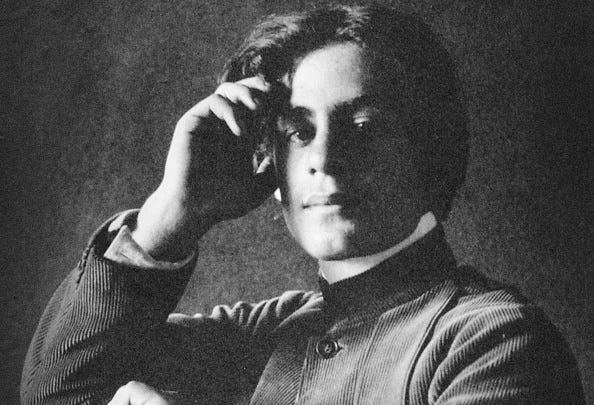The Writer's Almanac from Saturday, January 6, 2007
"Poe's Anvil" by David Ray, from Music of Time: Selected and New Poems. © The Backwater Press.
It's the birthday of journalist, poet, novelist, and biographer Carl Sandburg, born in Galesburg, Illinois (1878). He was a poet and a political journalist, but he didn't have any real financial success until a publisher suggested that he write a biography of Abraham Lincoln. His Abraham Lincoln: The Prairie Years, published in 1926, was Sandburg's first best-seller. He moved to a new home and devoted the next several years to completing four additional volumes.
It's the birthday of poet Khalil Gibran, born in a mountain village in Lebanon (1883). When Gibran was a boy, his mother decided to leave her alcoholic husband and take her four children to America. They settled in Boston, where they had relatives, and it was there that a charity worker noticed that Gibran appeared to be artistically gifted. Members of the aristocratic Boston society found him charming, and they began inviting him to social gatherings, where he discussed philosophy and poetry. Numerous aristocratic ladies fell in love with him and became his patrons, but he never married any of them.
One day, a man named Alfred A. Knopf was invited to a gathering at Gibran's apartment. Knopf was just starting up a publishing company, and when he saw how fascinated people were with Gibran, he decided to offer the man a publishing contract. Gibran's first two books with Knopf weren't very successful, but his third was a book called The Prophet. When it came out in 1924, The Prophet sold slowly at first, but its sales kept growing and growing over time. By 1931, it had been translated into 30 languages. In the 1960s, it became popular with college students. And today, passages from it are still read at weddings, baptisms, and funerals. It is the best-selling book in Alfred A. Knopf's history.
It's the birthday of novelist, critic, and photographer Wright Morris, born in Central City, Nebraska (1910). He had started writing novels by the time he was in his 20s, but he first became known for his photography. In 1940, he set out on a 15,000-mile tour around the United States, taking photographs along the way. He focused on capturing the inanimate objects of rural America. He took pictures of tiny churches, grain elevators, and farm implements as well as the clothing in closets, the objects in dresser drawers, and the decorations on mantelpieces.
Morris eventually began to use his photographs to inspire his fiction. In 1946, he published The Inhabitants, a collection of photographs of American houses with a series of stories written in the voices of people who might have lived in those houses.
He went on to publish more than 30 books of both fiction and photography and he won the National Book Award twice, for his novel The Field of Vision in 1956 and his novel Plains Song for Female Voices in 1980.
It's the birthday of novelist and editor E.L.(Edward Lawrence) Doctorow, born in New York City, New York (1931). He grew up in the Bronx. His father had a store in Manhattan that sold radios, records, and musical instruments. It folded during the Depression, and he later sold television sets and stereo equipment.
After high school, Doctorow went to Kenyon College in Ohio to study poetry with the poet and teacher John Crowe Ransom. After college, he earned his living as an "expert reader" for film and television production companies in New York. He eventually moved on to a job at a publishing house, where he helped edit books by writers such as Norman Mailer and James Baldwin.
In 1971 he published his novel The Book of Daniel (1971), which won the National Book Award, but it was his next book, Ragtime (1975), that became his first real best-seller. He later said it was the easiest book he ever wrote. Set in the decade prior to World War I, it includes characters like William Howard Taft, J.P. Morgan, Sigmund Freud, Emma Goldman, and Harry Houdini.
Be well, do good work, and keep in touch.®
CLICK HERE to subscribe!





